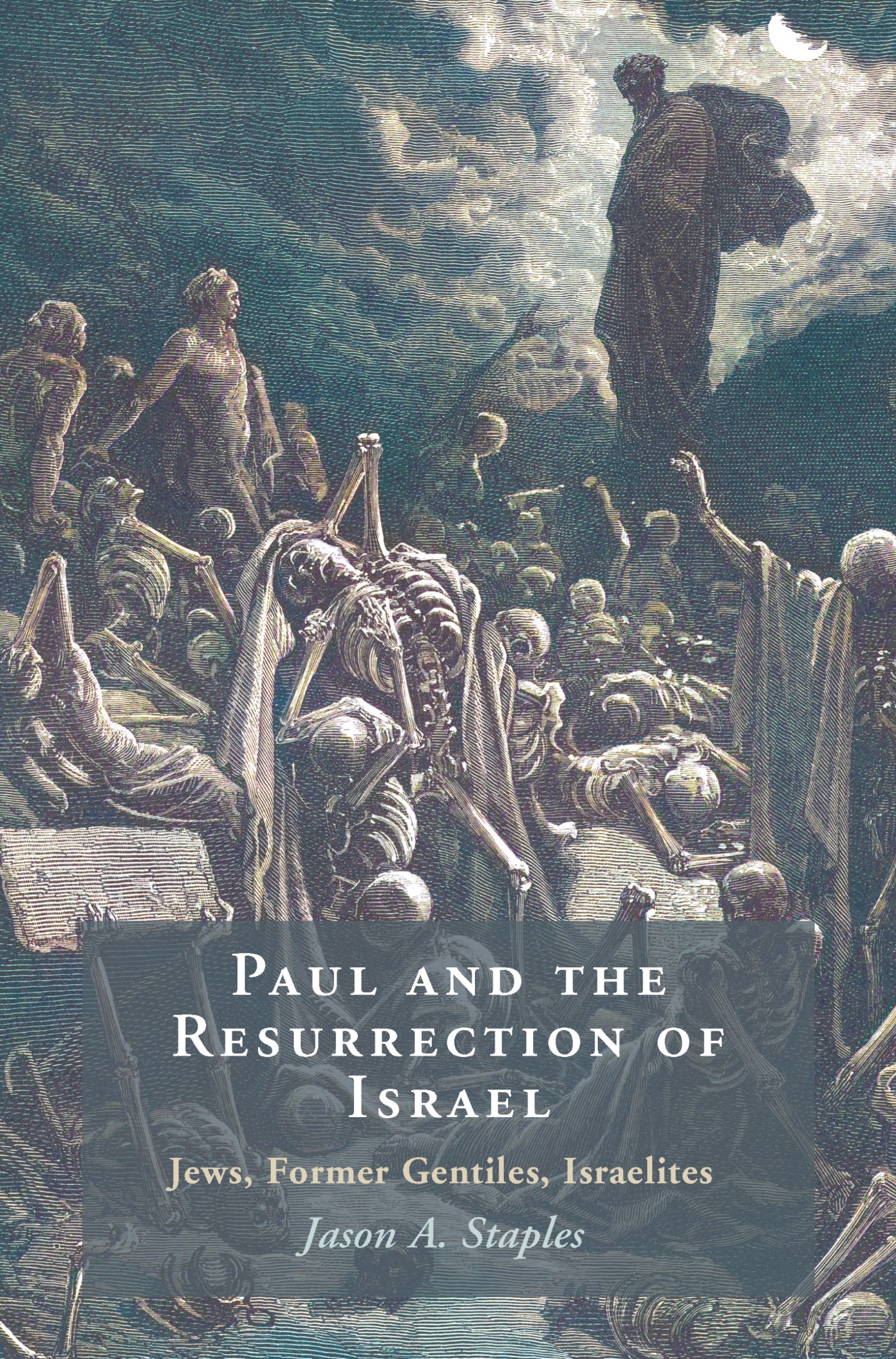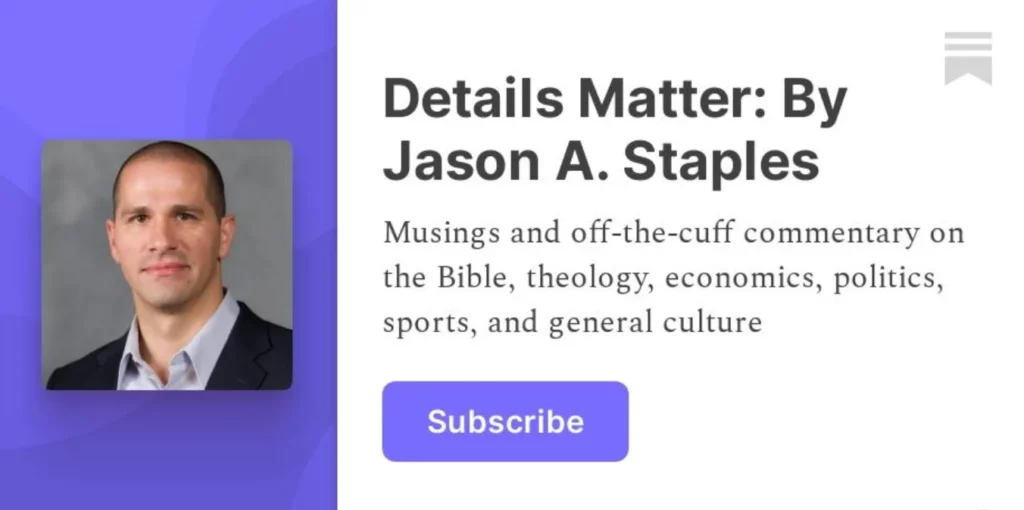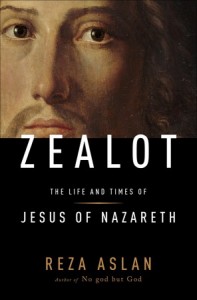I’ve been steadily plugging away at the first portion of my dissertation (the one having to do with early Jewish understandings of Israel and Israelite restoration eschatology) this summer, and I’ve found it necessary to spend a good bit of time parsing the distinctions between the key terms Ἰουδαῖος (Jews/Judaeans/Judahites), Israel, and Hebrew in early Jewish usage. One of the most widely cited interpretations of the relationship between the Ἰουδαῖος and Israel(ite) is derived from Karl Kuhn’s article on the terms in Kittel’s TWNT (1938; English in 1965), which asserted that “Israel” was the preferred “insider” designation for the people while Ἰουδαῖος was the “outsider” term, sometimes carrying a disparaging nuance. In working through the evidence, I have concluded that there is no evidence of such an insider/outsider distinction (though there is a distinction between the terms), nor is there any hint of a “disparaging” sense to the term Ἰουδαῖος, but rather Kuhn simply read the world of prewar Germany into the ancient evidence. In working through my section on this material, showing where anti-Semitic and anti-Jewish assumptions have in fact underlay the understanding of these terms in a great deal of New Testament scholarship since Kuhn/Kittel (both of whom were Nazi party members), I came across an excellent (and very fun) article: Maurice Casey, “Some Anti-Semitic Assumptions in the Theological Dictionary of the New Testament,” NovT 41.3 (1999): 280–91.
Not only does Casey anticipate many of the observations I had come to in my own research, his article is written so sharply and with so much clear displeasure at the continued uncritical use of the TWNT/TDNT as to be an unusually fun read for a top-tier academic article. Casey’s opening made it clear that he was going to be on fire throughout:
The ability of New Testament scholars to repeat major works of reference knows no bounds. Nowhere is this more regrettable than in the case of the earlier volumes of the Theologisches Wörterbuch zum Neuen Testament (TWNT), later translated into English as the Theological Dictionary of the New Testament (TDNT). These volumes were produced in Germany when anti-semitism was at its height in the run-up to the Holocaust. Scholars nonetheless continue to repeat their contents without proper critical assessment.
He continues later with just the right amount of snark:
This material is still being repeated because of the regrettably high regard in which this work of reference is held, and because of the widespread and unfortunate habit of repeating the words of dead professors, regardless of truth or falsehood.
And again, after exposing numerous personal connections to National Socialism of several key contributors to the TWNT/TDNT, along with other anti-Semitic/anti-Jewish publications and presentations by these contributors, and—most importantly of all—clear anti-Semitic undertones within the articles themselves:
It is ironical that this Nazi and SS supporter [here speaking of Walter Grundmann] should have written also the New Testament part of the article on sin (ἁμαρτάνω), and even more so that this does not show such specific signs of bias. This should remind us all that the frame of reference which separated Jesus from Judaism was inherited from centuries of Christian history. It is this frame of reference which remains a menace to us all, because it is so easy to take over. It fits any kind of Christian perspective quite beautifully. What is even more menacing is that it is almost invisible to sharp honest scholars of any perspective: the separation of Jesus’ prayer habits from those of contemporary Judaism looks for all the world like a purely historical argument, based on fact.
His conclusion is equally outstanding:
When prejudices are so pervasive, it is exceptionally difficult even for brave, honest and independent people to resist them. This indicates how theological anti-Judaism may be found among contributors who did not share the extreme ideological commitments and anti-semitism of Kuhn, Grundmann and their ilk. This however makes it more important to uncover these ideological commitments, not less. This is because these commitments are so extreme. When the editor and important contributors to TWNT turn out to be Nazis, and an editorial assistant an SS supporter, it should be a standing warning to us all that even those with more theological commitments lived in a society so controlled by an anti-Jewish outlook that we should be constantly on our guard against believing anything written in TWNT, and we should use it only in the most critical spirit.
The Theological Dictionary of the New Testament is a very dangerous book, especially in its opening [pre-WWII] volumes. What is dangerous about it is the frames of reference from which its contributors came in: they were learned men who did not make factual errors which we can all spot. The mildest contributors to the early volumes had German Christian prejudices: the most menacing were Nazis. The more extreme life commitments are generally unknown to the moder reader, and are being made known on a very slow and random basis by people who work in other fields of study. The frames of reference never lie on the surface of the articles: they are buried in apparently historical statements. It follows that this dictionary should be used only with the utmost care. Students should be warned of this hidden menace, and all readers should consult it only with their critical wits sharpened to the highest degree.
Casey’s article is both a terrific read and an important contribution; I’ll definitely be using this piece to beef up my own section on the anti-Semitic undertones of the TDNT on Ἰουδαῖος and Ἰσραήλ, and I recommend it to any NT folks or scholarly types who want an enjoyable read.





9 Comments. Leave new
Fascinating, thanks.
Hey Jason,
This may be slightly off topic for this post, but given your fascination with Pauline studies and my own almost complete lack of knowledge of contemporary Pauline scholarship, I wonder if I might bother you to recommend a book or two that I could read to orient myself.
Mitchell,
I’m sorry for the delayed response, but I’ve been mulling this one over and I’m not sure I like any of the introduction to Paul stuff enough to recommend it wholeheartedly. I’ll think it over another day or so and then give you a couple places you might start, but a big part of why I went into this field is because of that dissatisfaction with the available resources.
OK, thanks. If you ever get around to writing your own introduction, let me know.
Anything yet? If not, don’t worry too much about it.
Hi Jason,
Sorry that I’m only jumping in now after the fact, but just came across your blog post. Have you found any other sources heavily critiquing Kittel’s work apart from the article cited, and then that of Ladd mentioned within the article? What I mean is more recently? Is Kittel still a standard? What do your think of the work at large?
Kind regards,
Morne
I wouldn’t consider Kittel a standard at this point. Many still consult it at times, but I would typically regard the TDNT with some suspicion, especially in anything that has to do with Judaism. It’s an uneven work, though, because the various articles are by so many different scholars, and it’s worth a look at times just to see what has been said. More careful studies today can use the Thesaurus Linguae Graecae to reconstruct the material that was at one time only accessible through lexica like Kittel and make their own conclusions.
I think it says much that Bromiley was able to condense the important stuff down to one volume
And yet he still included these problematic entries on “Jew,” “Israel,” and “Hebrew” and other topics.